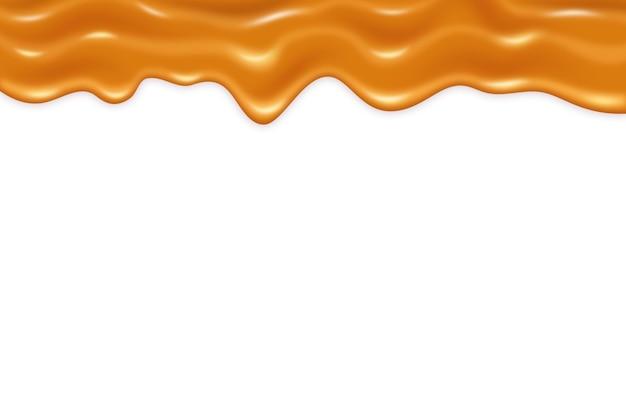Styrofoam, a popular packaging material known for its lightweight and insulating properties, has become a topic of concern when it comes to its potential toxicity. Many questions revolve around the safety of melted Styrofoam, its impact on human health, and its environmental consequences. In this blog post, we will delve into the various aspects of this controversial material, providing you with unbiased information to help you make informed decisions.
From examining the dangers of ingesting melted Styrofoam to exploring its behavior at different temperatures, we will address common queries such as the safety of microwaving food in Styrofoam and the release of toxins when heated. Additionally, we will discuss the impact of Styrofoam on our environment and the best methods for its disposal. So grab a cup of coffee, settle in, and let’s uncover the truth about melted Styrofoam together!
Stay tuned as we dive deeper into the subject, exploring everything from its potential health risks to the countries that have already taken action by banning its usage. By the end of this blog post, you’ll have a comprehensive understanding of the downsides and disadvantages associated with this notorious material.
Note: This post was updated in 2023 to provide you with the latest information on the subject matter.
Is Melted Styrofoam Toxic
Styrofoam, oh how you keep our takeout warm and our coffee hot! But what happens when this sturdy foam meets its arch-nemesis, heat? Melting ensues, and with it, questions arise. Is melted styrofoam toxic? Should we be concerned about the fumes that waft from this molten marvel?
The Heat is On: A Meltdown Adventure
When Styrofoam encounters high temperatures, it experiences a radical transformation from a solid fortress to a gooey molten mess. And while watching it turn into a pool of bubbling goo might ignite your curiosity, the real concern lies in what happens next.
The Toxic Truth Exposed
Melted styrofoam can release a chemical compound called styrene. Now, before you panic and start frantically googling the nearest hazmat suit, let’s dive deeper into the toxic truth.
Studies have shown that short-term exposure to styrene in high quantities can cause respiratory issues, irritation, and even nervous system effects. However, the levels of styrene released from melted styrofoam are far lower and typically not at concentrations that pose an immediate health risk.
Smells Like… Victory
Ah, the smell of a melted Styrofoam cup. It’s a scent that could make your nose hairs stand at attention. However, before you run for the hills in search of fresher air, take heart in knowing that the odor isn’t necessarily an indication of toxicity.
The funky smell is primarily caused by the release of volatile organic compounds (VOCs) during the melting process. While breathing in these fumes isn’t exactly pleasant, the concentrations of VOCs from melted styrofoam are generally not significant enough to cause significant harm. So, your nose might object, but your health will likely stay intact.
Avoid Melting Mishaps
Although melted styrofoam might not be as toxic as a James Bond villain, it’s still a good idea to avoid unnecessary exposure. To prevent any potential health hazards, keep the following tips in mind:
- Avoid microwaving styrofoam: Microwaves and styrofoam don’t play well together. Opt for microwave-safe containers when nuking your leftovers to prevent any unwanted meltdowns.
- Don’t use melted styrofoam for cooking: Even if you’re feeling adventurous, don’t try using that pool of goo as a substitute for cooking oil. Stick to traditional ingredients and keep the melted styrofoam out of your recipes.
- Ventilate the area: If you find yourself confronted with a melted styrofoam disaster, make sure to open windows and doors to allow fresh air in and any potentially harmful fumes out.
While melted styrofoam might not be the pinnacle of culinary delight, it’s not the harbinger of doom either. The small levels of styrene released from melted styrofoam usually don’t pose an immediate health risk. So, put on your skeptical goggles and rest easy knowing that your accidental styrofoam lava flow is unlikely to turn into a toxic meltdown.
FAQ: Is Melted Styrofoam Toxic
Styrofoam, or expanded polystyrene (EPS), is a common material used in packaging and food containers. However, there has been some concern about the potential dangers of melted Styrofoam. In this FAQ-style subsection, we will address common questions and shed light on whether melted Styrofoam is toxic or harmful to your health.
Is it dangerous to eat melted Styrofoam
Eating melted Styrofoam is not recommended. While small amounts may not cause immediate harm, it is not intended for consumption and may lead to adverse health effects. It is best to avoid ingesting any material that has melted Styrofoam.
At what degree does Styrofoam melt
Styrofoam generally starts to melt around 212°F (100°C). However, it can begin to soften at lower temperatures, depending on the conditions. It’s important to note that heating Styrofoam can release toxic chemicals, so it’s best to avoid high temperatures altogether.
Is it safe to eat food microwaved in Styrofoam
Heating food in Styrofoam containers is generally not recommended. Styrofoam can release harmful chemicals, such as styrene, when exposed to heat. It is advisable to transfer food to microwave-safe containers before heating to ensure your safety.
Does Styrofoam have Formaldehyde
No, Styrofoam does not contain formaldehyde. Formaldehyde is not used in the production or composition of Styrofoam. However, the process of manufacturing Styrofoam may involve the use of other chemicals, so it’s still important to handle it with caution.
Can I burn cardboard
Yes, cardboard can be safely burned in controlled conditions, such as in a fireplace or fire pit. However, it is important to follow local regulations and guidelines for proper disposal of cardboard and to ensure safe burning practices.
Is number 6 Styrofoam microwave-safe
No, number 6 Styrofoam, also known as expanded polystyrene (EPS), is generally not considered microwave-safe. When exposed to high temperatures, it can release toxic chemicals. It is better to transfer food to microwave-safe containers before heating.
Why is Styrofoam bad for your health
Styrofoam can pose health risks due to the chemicals it contains. When heated or melted, Styrofoam can release toxic substances, including styrene. Long-term exposure to styrene has been associated with potential health problems, such as respiratory issues and possible effects on the nervous system.
What happens if I burn Styrofoam
Burning Styrofoam can release harmful fumes and toxic chemicals, including styrene, into the air. Inhaling these fumes can irritate the respiratory system and may cause headaches, dizziness, and other health issues. It is important to avoid burning Styrofoam and to dispose of it properly.
What is the best way to get rid of Styrofoam
The best way to dispose of Styrofoam is through recycling programs specifically designed for this material. Many recycling centers now accept Styrofoam, so check with your local waste management authority to find the nearest drop-off location. Proper recycling ensures that the material is handled appropriately and reduces environmental impact.
Is it safe to eat hot food in Styrofoam
It is generally not recommended to consume hot food directly from Styrofoam containers. Styrofoam can release chemicals when it comes into contact with hot substances, potentially contaminating your food. It is safer to transfer the food to a microwave-safe or food-grade container before serving.
Does Styrofoam release toxins when heated
Yes, Styrofoam can release toxins, including styrene, when heated. This is why it is important to avoid exposing Styrofoam to high temperatures, whether through microwaving or other heating methods. Minimizing heat exposure helps reduce the risk of releasing harmful chemicals.
How long does Styrofoam take to decompose
Styrofoam is not easily biodegradable and can take hundreds of years to decompose naturally. Its durability is one of the reasons why Styrofoam is an environmental concern. It is important to practice proper recycling and reduce the use of Styrofoam whenever possible.
What temperature is safe for Styrofoam
Styrofoam is designed to withstand normal ambient temperatures. However, it is best to keep it away from excessive heat sources or direct flames. Generally, temperatures below 212°F (100°C) are considered safe, but it’s always better to avoid subjecting Styrofoam to high temperatures.
Is it safe to freeze in Styrofoam
Yes, it is generally safe to freeze food or other items in Styrofoam containers. Freezing does not typically cause Styrofoam to release harmful chemicals. However, it is advisable to check if the particular Styrofoam container is labeled as freezer-safe by the manufacturer.
Does Styrofoam hold hot water
Styrofoam is not designed to hold hot water and can be damaged or distorted when exposed to high temperatures. It is recommended to use appropriate materials, such as heat-resistant containers, for holding hot water to avoid any potential safety risks or damage.
Is Styrofoam poisonous to humans
Styrofoam itself is not inherently poisonous to humans. However, certain chemicals present in Styrofoam, such as styrene, can pose health risks when exposed to them through ingestion or inhalation. It is best to minimize direct contact and avoid consuming food or drinks that have been in contact with heated or melted Styrofoam.
At what temperature does Styrofoam catch on fire
Styrofoam is a flammable material that can catch fire at relatively low temperatures. It has an ignition point of around 600°F (315°C). It is crucial to keep Styrofoam away from open flames, heaters, and other high-heat sources to prevent potential fire hazards and toxic fume emissions.
Is drinking out of Styrofoam bad for you
Generally, it is not recommended to drink beverages directly from Styrofoam cups. The hot liquids can cause Styrofoam to release toxic chemicals, which can contaminate your drink. It is better to transfer the beverage to a glass, ceramic, or stainless steel container to ensure your safety.
Is it safe to drink hot coffee from a Styrofoam cup
While Styrofoam cups are often used for hot beverages, it is advisable to exercise caution. The hot coffee can cause the Styrofoam to release harmful chemicals like styrene into your drink. To avoid potential health risks, consider using alternative containers, such as glass or stainless steel, for hot beverages.
Why is Styrofoam bad for us
Styrofoam is considered harmful due to its environmental impact and potential health risks. It is non-biodegradable and can persist in landfills for hundreds of years. When exposed to heat, Styrofoam can release toxic chemicals that may have adverse effects on human health. Choosing more eco-friendly alternatives is beneficial for both the environment and our well-being.
Which countries have banned Styrofoam
Several countries have implemented regulations and restrictions on Styrofoam to address environmental concerns. Some examples include the United Kingdom, France, Canada, and certain states in the United States. These bans aim to reduce the consumption and production of Styrofoam and promote more sustainable alternatives.
Is Styrofoam cancerous
There is no direct evidence to suggest that Styrofoam causes cancer in humans. However, exposure to certain chemicals found in Styrofoam, such as styrene, has been associated with potential health risks. The International Agency for Research on Cancer (IARC) has classified styrene as a possible human carcinogen. Continued research is being conducted to better understand the long-term effects of styrene exposure.
What are the disadvantages of Styrofoam
Styrofoam has several disadvantages, including its detrimental environmental impact, potential health risks, and non-recyclability in many areas. Styrofoam waste takes up significant space in landfills and is not easily biodegradable. Additionally, when heated or burned, it releases toxic substances that can harm both human health and the environment. Considering alternative packaging and insulation materials can help overcome these drawbacks.
This comprehensive FAQ-style subsection answered common questions related to the safety and potential hazards of melted Styrofoam. It covered topics such as eating melted Styrofoam, temperature limits, health risks, disposal methods, and more. By understanding the risks associated with melted Styrofoam, you can make more informed decisions to protect your health and the environment. Remember, it’s always best to prioritize safer alternatives and minimize the use of Styrofoam whenever possible.

